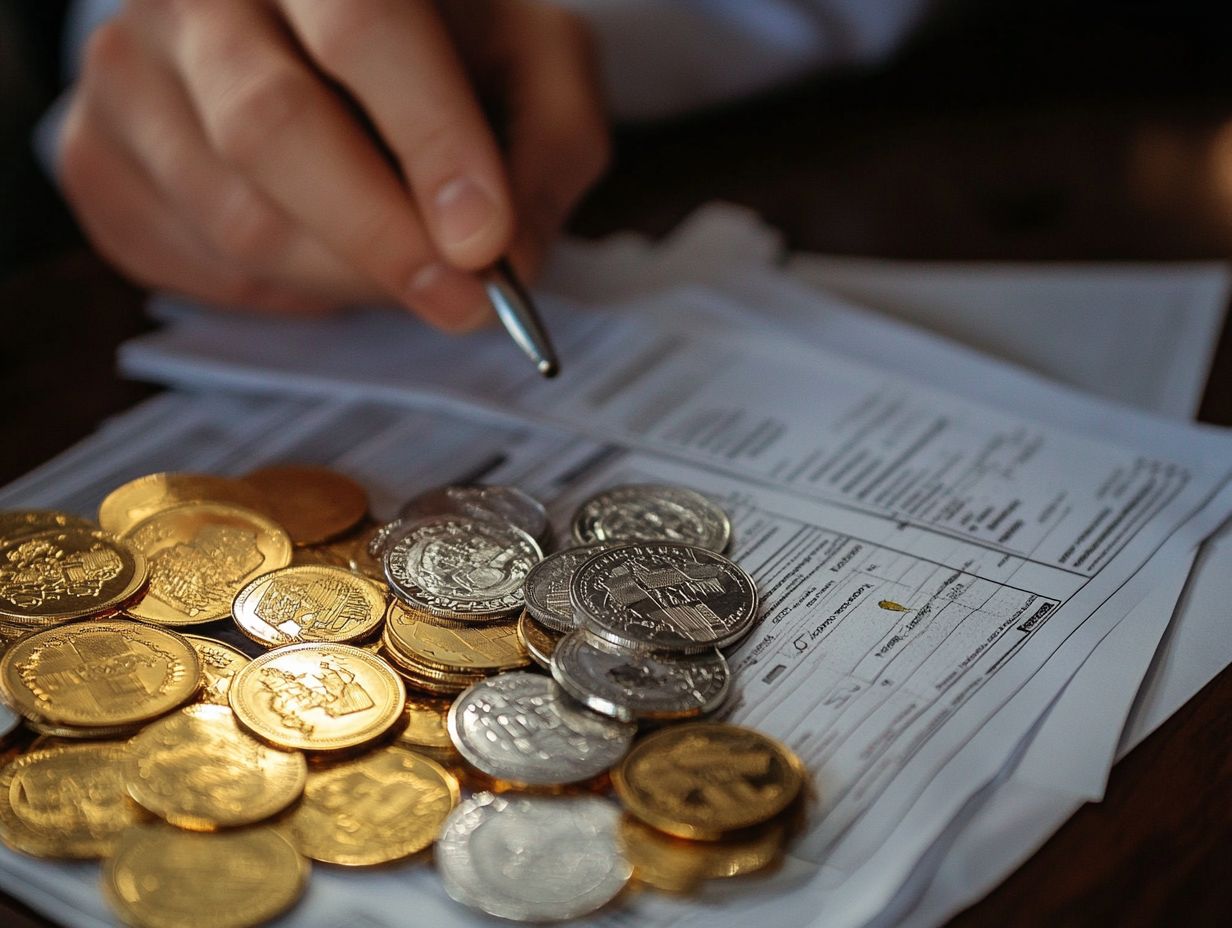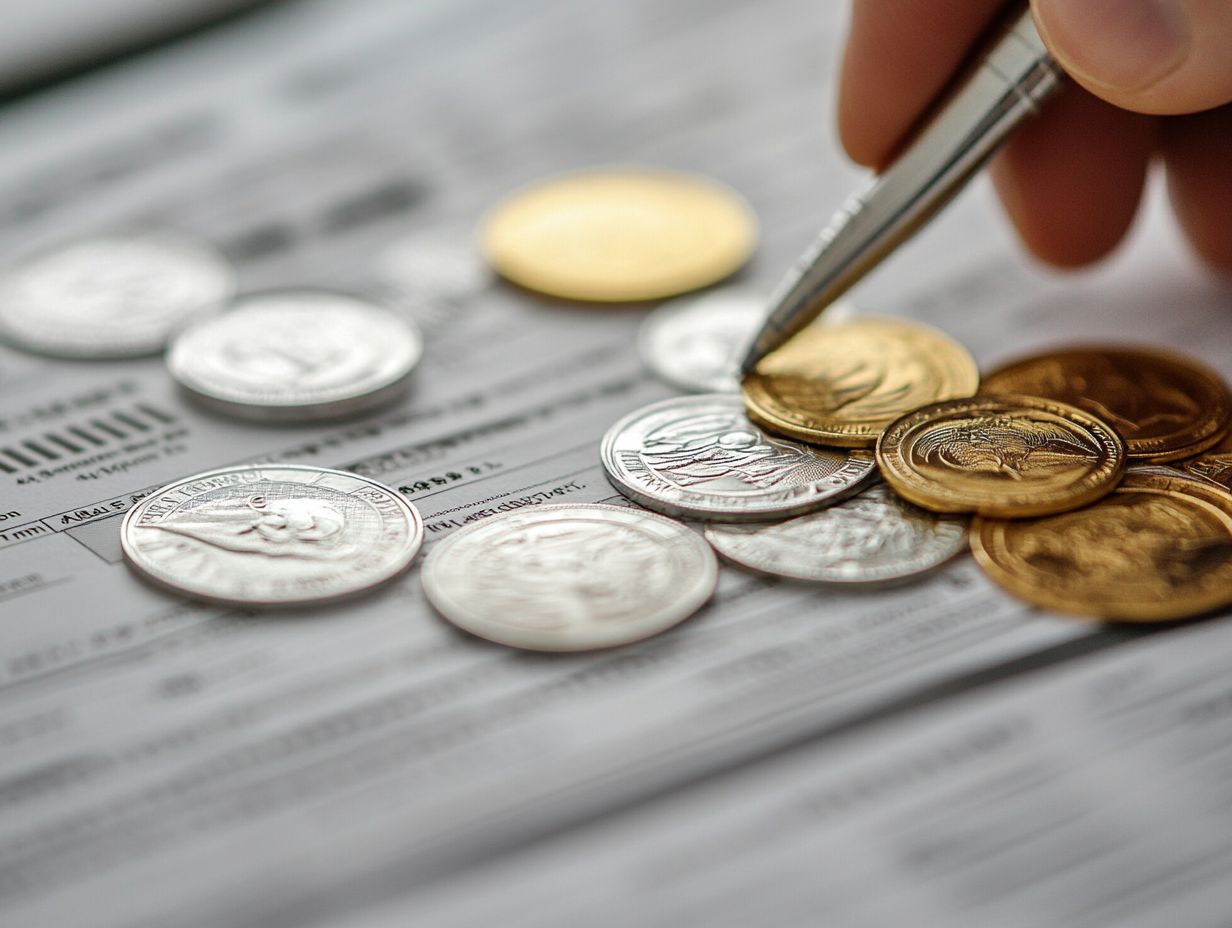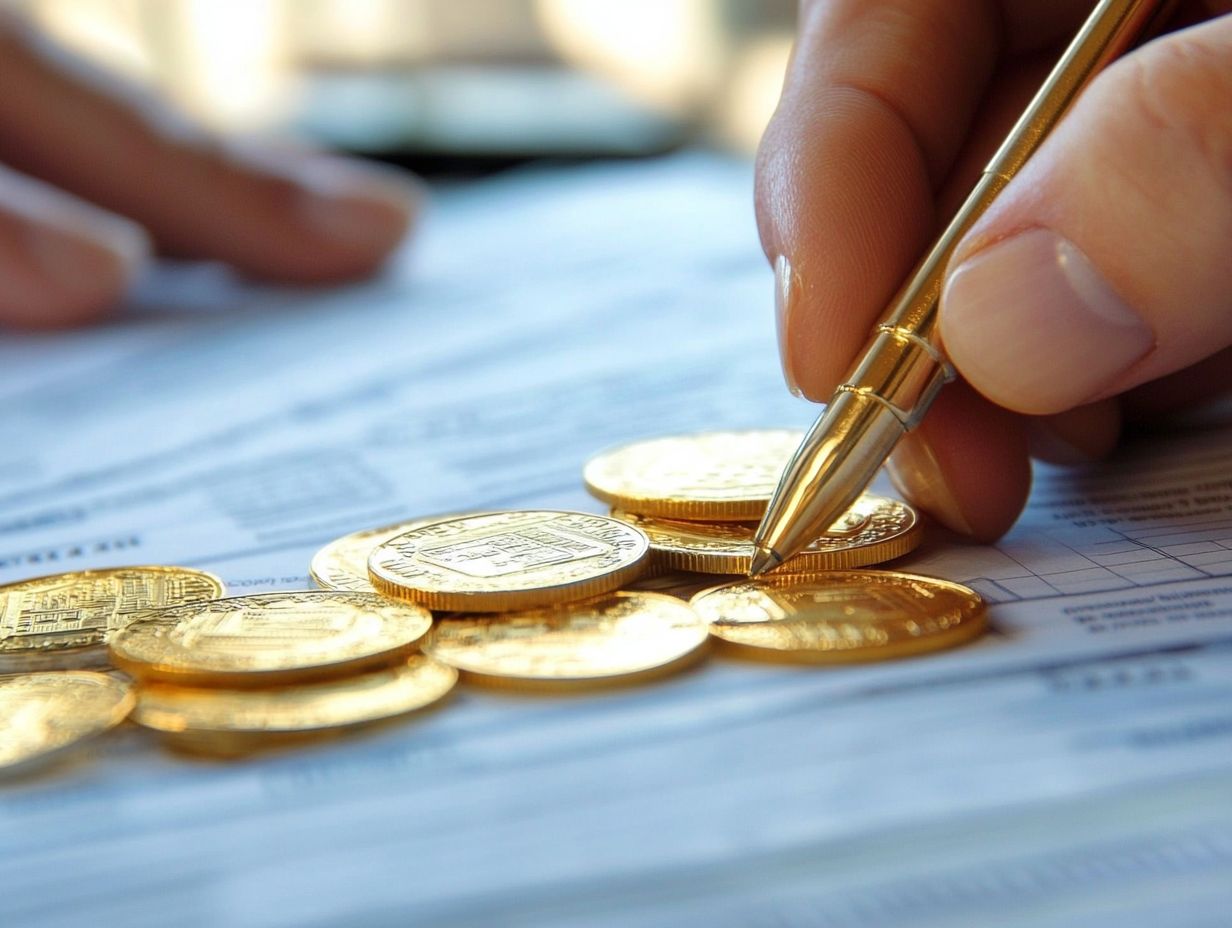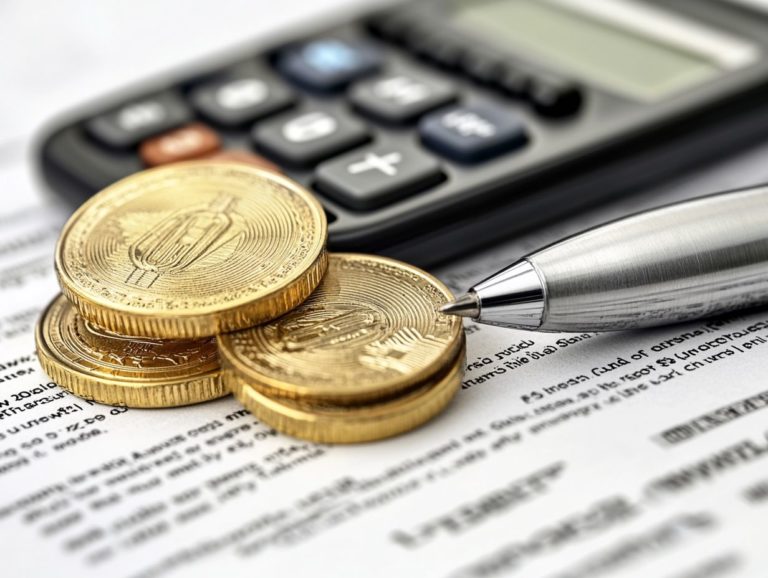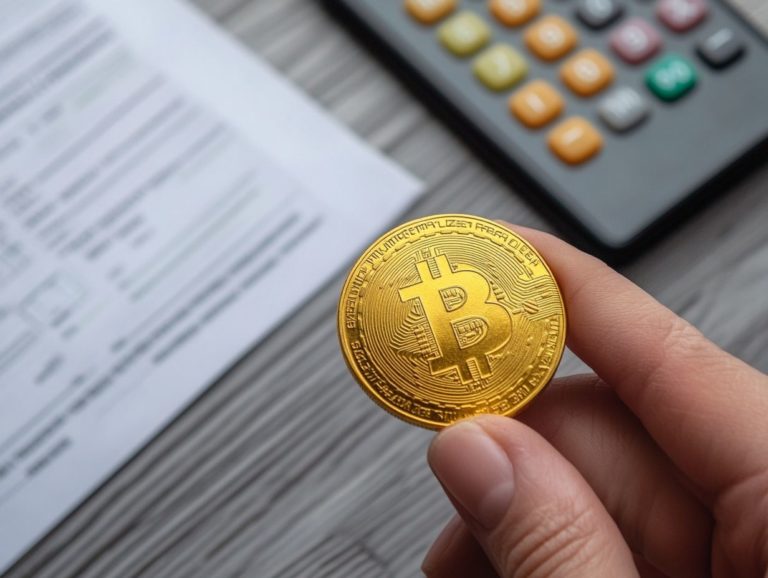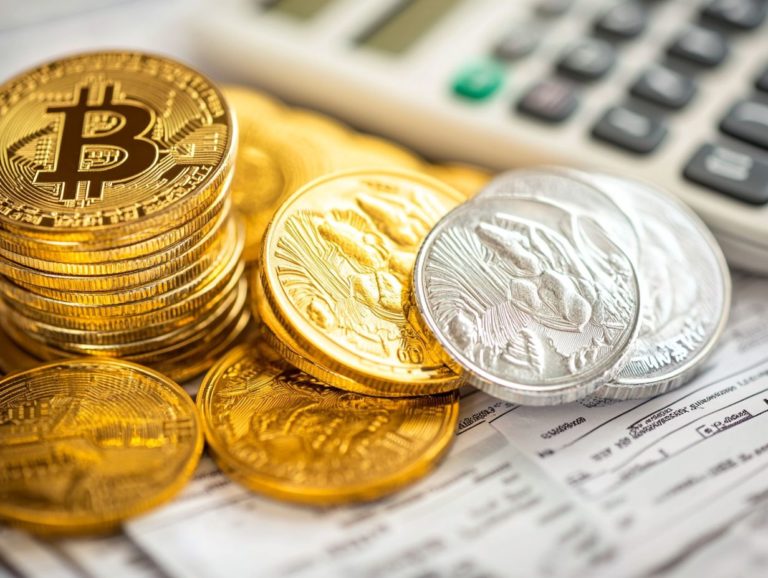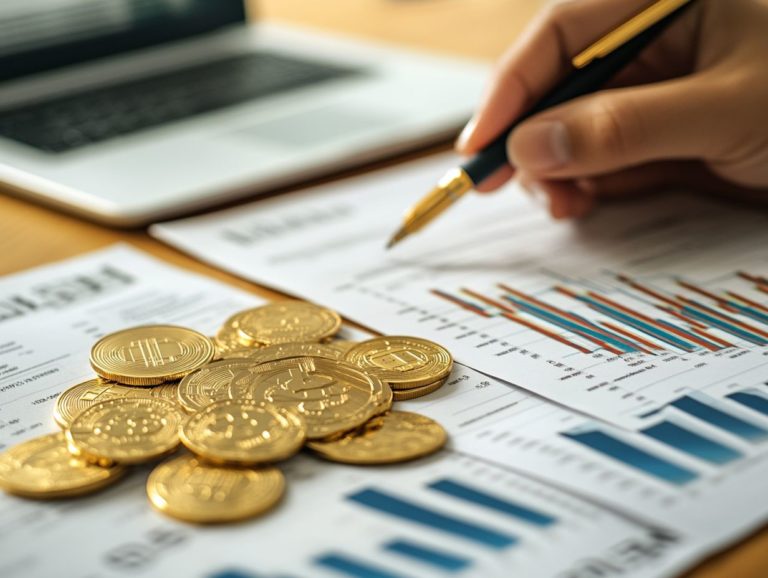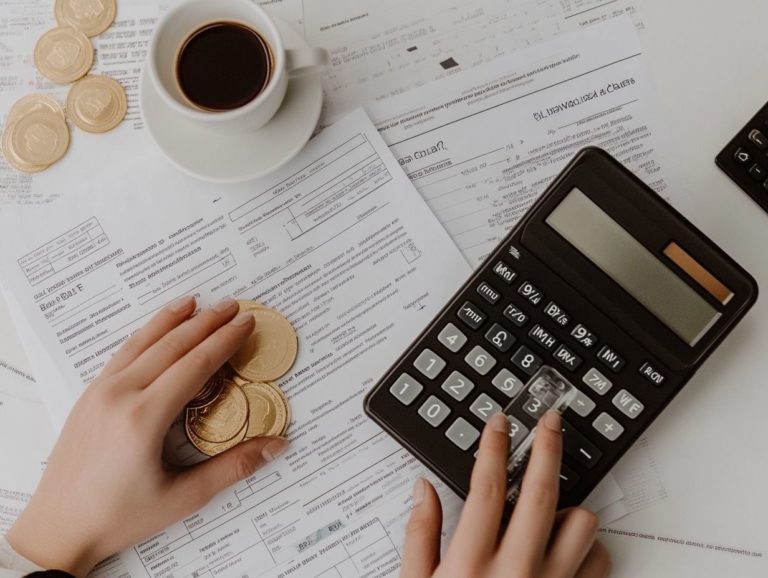Navigating Complex Tax Issues in Precious Metals Investments
Are you ready to explore the exciting world of precious metals investing? Investing in precious metals presents an enticing opportunity for you to diversify your portfolio and hedge against inflation.
It’s essential to grasp the nuances of these investments, from the different types of precious metals and their applications to the financial benefits and potential risks involved.
This article delves into the intricacies of precious metals investments, covering tax implications, capital gains, reporting requirements, and strategies to maximize your returns while steering clear of common pitfalls. You’ll also learn how international tax considerations can further impact your investment decisions, empowering you to make informed choices in this dynamic market.
Contents
- Key Takeaways:
- Understanding Precious Metals Investments
- Tax Implications of Precious Metals Investments
- Navigating Complex Tax Issues
- International Tax Considerations
- Frequently Asked Questions
- What are considered precious metals for tax purposes?
- How are precious metals taxed?
- Are there any tax benefits for investing in precious metals?
- What is the tax treatment for gains or losses on precious metals investments?
- Are there any tax implications when selling precious metals?
- Do I need to report my precious metals investments on my tax return?
Key Takeaways:
- Precious metals investments have both benefits and risks, so it’s important to understand them before investing.
- Capital gains tax and reporting requirements can impact returns on precious metals investments, so stay informed to protect your investments!
- International investors should be aware of potential tax implications and utilize tax treaties and foreign tax credits when possible to maximize returns.
Understanding Precious Metals Investments
Understanding precious metal investments requires a thorough exploration of various forms, including gold, silver, platinum, and palladium. These metals are not just valuable due to market dynamics; they also serve as a robust hedge against inflation and currency fluctuations, particularly for new investors.
As tangible assets, they can effectively diversify your investment portfolio, acting as a protective measure during economic downturns while also presenting the potential for substantial returns over time.
Types of Precious Metals and Their Uses
The primary types of precious metals you should consider include gold, silver, platinum, and palladium, each possessing unique properties and applications across various industries and investment strategies.
Gold stands out as a reliable store of value, often regarded as a safe haven during economic uncertainty, making it a favored choice among investors like yourself. In contrast, silver enjoys considerable industrial demand, particularly in the realms of electronics and solar panels, while also holding a significant place in the jewelry market.
Platinum is highly valued for its catalytic properties, essential in automotive manufacturing, whereas palladium has gained traction for similar reasons, with its rising use in automotive catalysts aimed at reducing emissions.
Understanding these nuances helps you choose the right metal while appreciating the investment potential of each asset, enabling you to strategically diversify your portfolio with confidence.
Benefits and Risks of Investing in Precious Metals
Investing in precious metals offers a distinctive blend of benefits and risks, making it crucial for you to grasp these factors before diving in.
The allure of precious metals, like gold and silver, often stems from their ability to act as a hedge against inflation. When the economy wobbles, these metals tend to hold their value, enabling you to safeguard your purchasing power. Their inherent liquidity means you can swiftly convert these metals into cash, adding a level of accessibility to your investment portfolio.
By incorporating these assets into your overall strategy, you can achieve diversification, effectively spreading your exposure across various asset classes and reducing overall risk. However, it’s essential to acknowledge the potential downsides; precious metals can be subject to volatility and market fluctuations that may impact your returns. This underscores the importance of careful consideration as you navigate this intricate landscape.
Tax Implications of Precious Metals Investments
Navigating the tax implications of precious metals investments is an essential journey for every investor, as these factors can profoundly influence your overall returns and financial strategy. It’s vital to grasp the nuances of capital gains tax—the tax you pay on the profit when you sell your investment—and the specific regulations outlined by the IRS.
By doing so, you ensure compliance with tax laws and effectively minimize the tax liabilities associated with your investment sales.
Don’t wait—start exploring your precious metals options now!
Capital Gains Tax on Precious Metals
Capital gains tax on precious metals can seriously impact your financial landscape. It is crucial for you to understand how these taxes are calculated according to IRS guidelines.
Navigating these regulations is essential; even a minor oversight in your reporting can lead to substantial penalties. When you sell items like gold, silver, or platinum coins, you must report your earnings accurately using IRS Form 8949 to detail the sales and Schedule D to summarize your overall capital gains and losses.
Neglecting to follow these requirements not only puts you at risk of fines but could also invite increased scrutiny from tax authorities. By staying informed and organized, you can effectively minimize your tax liabilities and safeguard your financial investments in these precious metals.
Reporting Requirements for Precious Metals Investments
Understanding the reporting requirements for precious metals investments is essential for compliance with tax laws, particularly if you’re a new investor navigating the intricate landscape of IRS forms.
Be aware that specific transactions involving precious metals—like gold and silver bullion—typically require filing Form 1099-B, which outlines the sales of these assets. You’ll also need to use Form 8949 to report any capital gains or losses. Keeping meticulous records of all transactions, including purchase prices, sales prices, and transaction dates, is imperative.
This level of documentation is crucial for ensuring accurate reporting and avoiding potential penalties. Diligence in record-keeping is paramount for anyone engaging in precious metal investments, reinforcing that a well-organized approach is your best ally in the world of finance.
Navigating the tax landscape associated with precious metal investments requires a strategic mindset. This is especially important for new investors who might face unique challenges and opportunities.
Employing tax strategies such as tax-loss harvesting can help you reduce your tax liabilities and enhance the performance of your overall investment portfolio.
It’s crucial to consult with tax professionals who can guide you through compliance with tax laws and regulations, ensuring your approach is both effective and legally sound.
Tax Strategies for Maximizing Returns
Implementing effective tax strategies is essential for maximizing your returns on precious metal investments. Techniques like tax-loss harvesting (the process of selling assets at a loss to offset capital gains) can offer valuable opportunities to enhance your portfolio’s performance.
By strategically offsetting gains with losses from underperforming assets, you can significantly improve your overall investment results. It’s wise to consider utilizing tax-efficient accounts, such as IRAs, to protect your gains from immediate taxation.
Exploring long-term capital gains treatment is another vital strategy; holding onto precious metals for over a year often leads to lower tax rates compared to short-term gains.
Additionally, understanding state-specific tax regulations can reveal potential deductions and credits, opening up even more pathways for optimizing your tax outcomes while securing your wealth through tangible assets.
Common Tax Mistakes to Avoid
Are you making these common tax mistakes? Being aware of common tax errors is imperative for you as an investor in precious metals, as these mistakes can lead to costly repercussions and compliance issues with tax laws.
A clear understanding of the tax implications of buying or selling these assets is essential. This knowledge can save you both money and stress in the long run. Many investors overlook the importance of keeping meticulous records, underestimating how critical documentation can be during tax season.
Failing to consult tax professionals can result in misinterpretations of tax regulations, potentially leading to unnecessary penalties. Recognizing frequent pitfalls, such as misreporting gains or neglecting state-specific regulations, underscores the need for expert guidance to navigate these complexities effectively.
International Tax Considerations
International tax considerations are crucial for you as an investor in precious metals, especially if you’re a Non-US investor. You’ll need to navigate a landscape filled with various tax implications and regulations that differ significantly from those in the United States.
A solid understanding of tax treaties and foreign tax credits is essential for ensuring compliance and optimizing your investment strategies, all while effectively minimizing potential liabilities.
Tax Implications for Non-US Investors
Tax implications for non-US investors in precious metals can be quite complex, demanding your careful attention to various factors and regulations set forth by the IRS.
Understanding these nuances is essential, as the IRS imposes specific reporting requirements and tax obligations that differ based on the nature of your investment and your country of origin. You need to carefully follow these rules to ensure compliance; otherwise, you risk facing significant penalties—including hefty fines or even legal consequences.
Selling precious metals can trigger capital gains tax. You’ll need to keep meticulous records and engage in thoughtful tax planning to avoid costly missteps. Partnering with tax professionals who specialize in international investments can be invaluable. They can help you mitigate risks and maximize your potential returns.
Tax Treaties and Foreign Tax Credits
Understanding tax treaties and foreign tax credits is essential for you as an investor in precious metals. These agreements can significantly impact your tax liabilities and compliance with tax laws.
These treaties are crafted to prevent double taxation, enabling you to navigate the often complex tax landscape with greater ease. By utilizing foreign tax credits, you can offset taxes paid to another country against your domestic tax obligations, effectively minimizing your overall tax burden. This is especially advantageous for those involved in the international trading of gold, silver, or other precious metals, ensuring that your profits aren’t excessively taxed.
Grasping the nuances of these treaties empowers you with the knowledge needed to make informed decisions, optimizing your returns while staying compliant with both domestic and international tax regulations.
Frequently Asked Questions
What are considered precious metals for tax purposes?
Precious metals for tax purposes include gold, silver, platinum, and palladium, as well as any other metal that the IRS designates as a precious metal.
How are precious metals taxed?
Precious metals are taxed as collectibles and are subject to a maximum federal tax rate of 28%. However, certain types of precious metals, such as bullion, may be taxed at a lower rate depending on the holding period.
Are there any tax benefits for investing in precious metals?
Yes, there are some tax benefits for investing in precious metals, such as the ability to defer taxes by holding them in a self-directed IRA or 401(k). However, these tax benefits may vary depending on individual circumstances and should be discussed with a tax professional.
What is the tax treatment for gains or losses on precious metals investments?
Gains or losses on precious metals investments are treated as capital gains or losses for tax purposes. Short-term gains (held for less than a year) are taxed at the individual’s ordinary income tax rate, while long-term gains (held for more than a year) are taxed at a lower capital gains tax rate.
Are there any tax implications when selling precious metals?
Yes, there are tax implications when selling precious metals. Any gains realized from the sale will be subject to capital gains tax, and any losses may be deducted from other capital gains. There may also be state and local taxes to consider based on your location.
Do I need to report my precious metals investments on my tax return?
Yes, any investments in precious metals, whether buying, selling, or holding, must be reported on your tax return. Keep your records precise and up-to-date to avoid future headaches!
Contact a tax professional today to ensure you’re making the most of your precious metals investments!



